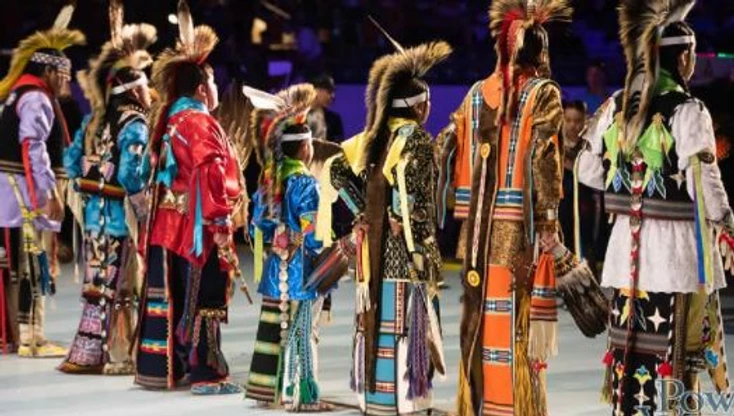
Contemporary Native American theater only emerged in the late 1960s and early 1970s, but it originated from a long indigenous tradition of storytelling. Stories about native American cultures were passed down for generations for entertainment as well as the preservation of native culture. Many were dramatized by storytellers for their audiences, forming the roots of indigenous theatre. In the 18th century Native Americans went from telling stories orally to writing them down in a variety of different genres including novels, poems, autobiographies, and short stories.
Native theatre didn’t exist for a while, mainly because theater was silenced and diminished in North America. Native American culture and art as a whole was also suppressed due to colonialism, which weakened oral traditions and made difficult the development of Native American theatre for more than two centuries. Colonialism also restricted the anthropological study of native theatre traditions, being seen as primitive and remote. For this reason, native performances were not explored or recognized, further silencing Native theater until the 20th century.
At the beginning of the 20th century, although there were no published plays, there were a few native theatrical performances, including Te Ata’s one-woman performances in which she used genuine props and costumes to act out traditional stories and legends. The very first two Native American plays were produced in the 1930s, one of which came to be the inspiration for the popular Broadway musical Oklahoma!
Contemporary Native American drama was created during the cultural revolution as the Civil Rights movement gained success and the idea of a single dominant race started to diminish. Drama became an important part of the cultural revolution because it represented groups of people and educated others on what suppressed cultures went through.
The American Indian Theatre Ensemble was founded in 1972 and changed to the Native American Theatre Ensemble in 1973. Their goal was to present Native American culture through theater. For years, American literature had misrepresented them as uncivilized savages. Native American playwrights wanted to free themselves of stereotypes and create realistic images of characters and stories shaped from their own experiences.
Sources Cited:
Lopez, Sidoni, and Hanane Benali. “Native American theater: A concise history.” Miscelánea: A Journal of English and American Studies, vol. 54, July 2016, pp. 93+. https://www.miscelaneajournal.net/index.php/misc/article/view/330/160
Kasuga, Hifryuki. “Native American Drama.” No Publication, https://salempress.com/Media/SalemPress/samples/cs_drama_pgs.pdf
Add comment
Comments